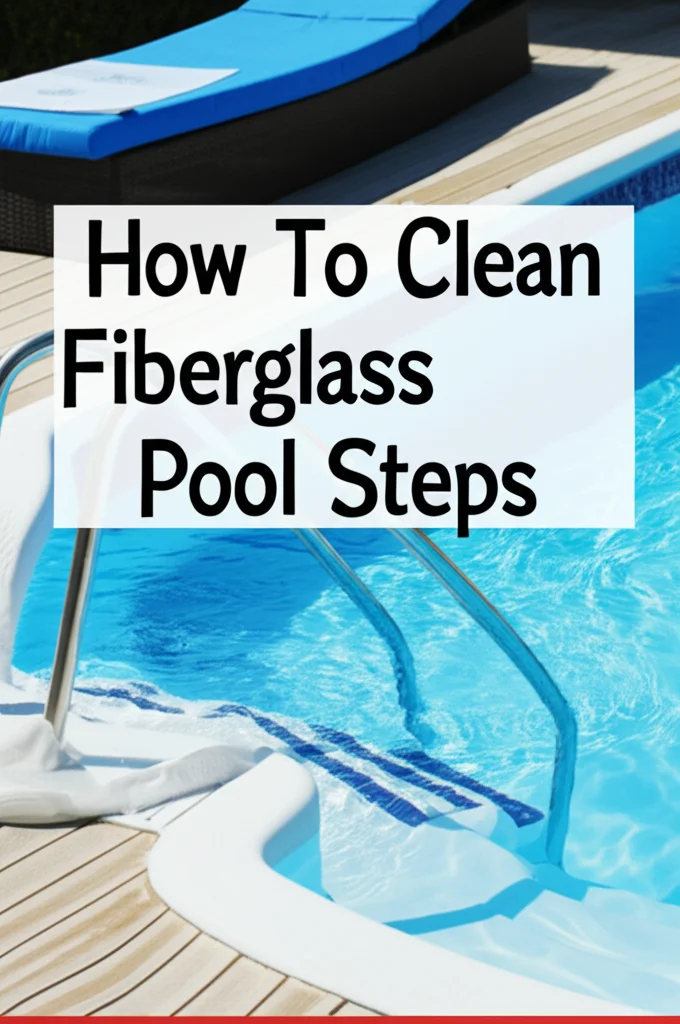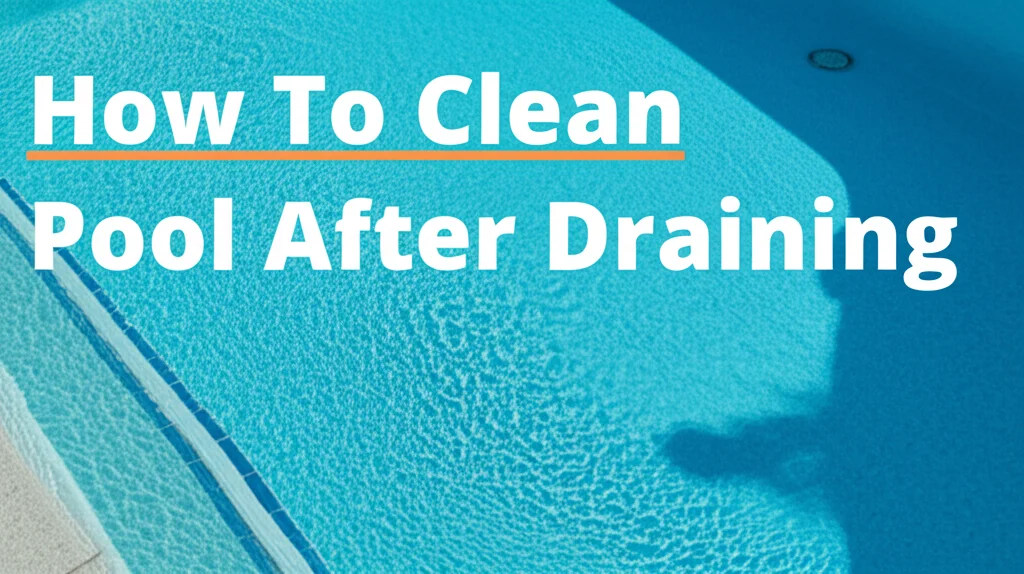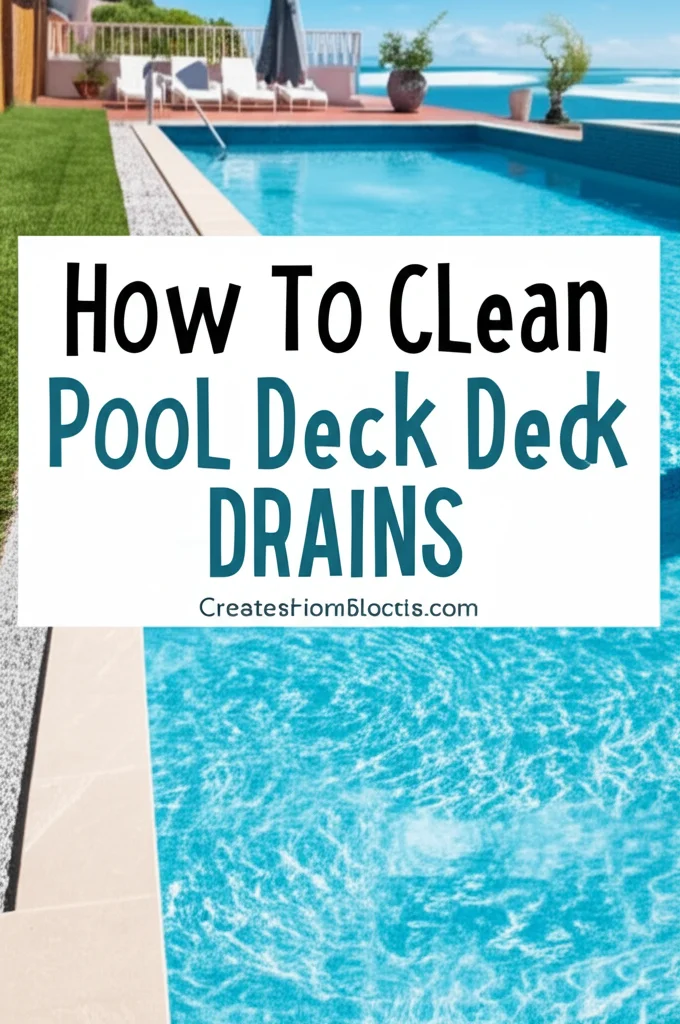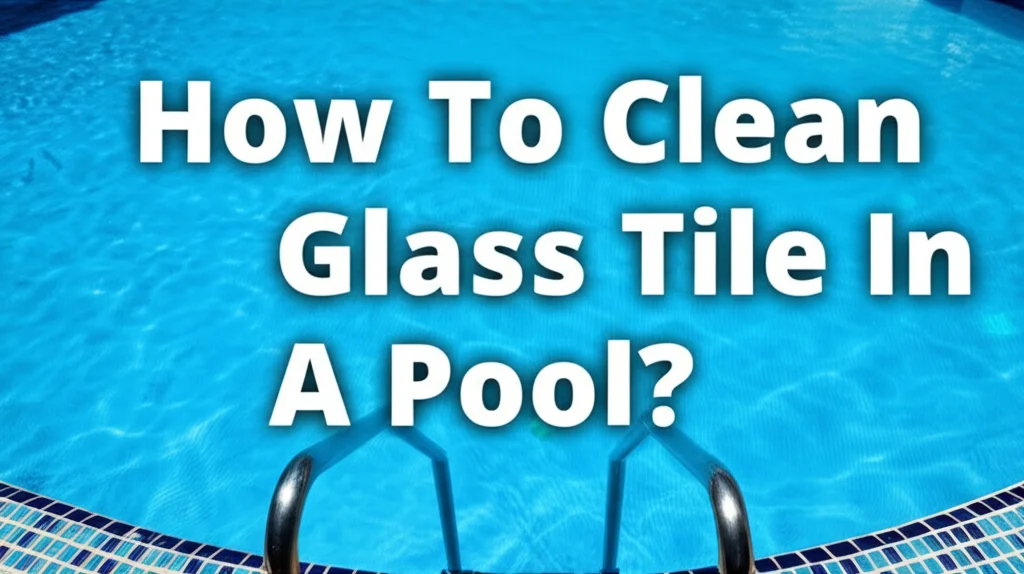· Pool Maintenance · 6 min read
How To Clean Fiberglass Pool Steps

Keeping Your Pool Steps Sparkling: How To Clean Fiberglass Pool Steps
Ever notice how quickly pool steps can become slippery and unsightly? Fiberglass pool steps, while durable, require regular cleaning to prevent algae buildup, stains, and maintain a safe swimming environment. This article will guide you through everything you need to know about how to clean fiberglass pool steps, from routine maintenance to tackling stubborn stains. We’ll cover the best cleaning solutions, tools, and techniques to keep your pool looking its best. Let’s dive in and learn how to keep those steps pristine!
Takeaway:
- Regular brushing prevents algae and grime buildup.
- Gentle cleaning solutions are best for fiberglass.
- Addressing stains promptly makes removal easier.
- Proper water balance contributes to cleaner steps.
What’s the quickest way to clean fiberglass pool steps?
A quick clean involves brushing the steps with a soft-bristled brush and vacuuming any loose debris. Maintaining proper pool water chemistry is also key to preventing buildup. This routine, done weekly, keeps steps looking fresh.
Why Fiberglass Pool Steps Need Regular Cleaning
Fiberglass pool steps offer a smooth, non-abrasive surface, making them comfortable for swimmers. However, this surface can become a breeding ground for algae, dirt, and other debris. Regular cleaning isn’t just about aesthetics; it’s about safety. A slippery surface can lead to accidents, and algae can harbor bacteria. Ignoring cleaning can lead to more significant problems, like staining and the need for more intensive (and costly) cleaning later on. Consistent upkeep is the key to enjoying a clean and safe pool.
Essential Tools for Cleaning Fiberglass Pool Steps
Before you start, gather the right tools. Using the wrong tools can damage the fiberglass surface. Here’s what you’ll need:
- Soft-Bristled Brush: This is your primary tool for removing algae and dirt. Avoid metal brushes, as they can scratch the fiberglass.
- Pool Vacuum: A pool vacuum, whether manual or robotic, will remove loose debris from the steps.
- Telescopic Pole: Attaching the brush and vacuum head to a telescopic pole allows you to reach all areas of the steps easily.
- Mild Cleaning Solution: Specifically designed for fiberglass pools, or a gentle dish soap solution.
- Soft Cloths or Sponges: For wiping down surfaces and tackling small stains.
- Pool Test Kit: To ensure your water chemistry is balanced. Maintaining proper pH and alkalinity is crucial for preventing algae growth.
Routine Cleaning: A Weekly Maintenance Schedule
Establishing a weekly cleaning routine is the best way to prevent major cleaning headaches. This doesn’t have to be time-consuming, but consistency is key.
- Brush the Steps: Use your soft-bristled brush to thoroughly scrub the steps, paying attention to corners and crevices. This dislodges algae and dirt before it has a chance to firmly attach.
- Vacuum the Pool: Vacuum the entire pool, including the steps, to remove any dislodged debris.
- Test Water Chemistry: Use your pool test kit to check pH, alkalinity, and sanitizer levels. Adjust as needed to maintain proper balance. Imbalanced water encourages algae growth.
- Skim the Surface: Remove any leaves, insects, or other debris from the water surface. This prevents them from sinking and settling on the steps.
Tackling Stubborn Stains on Fiberglass Pool Steps
Sometimes, despite regular cleaning, stains appear. Identifying the type of stain is the first step to effective removal. Here’s how to address common stains:
- Organic Stains (Leaves, Berries): These stains are typically brown or reddish. Use a pool stain remover specifically designed for organic stains, following the product instructions carefully. You can also try a vitamin C tablet rubbed directly onto the stain.
- Metal Stains (Iron, Copper): Metal stains often appear as blue, green, or brown discoloration. A metal sequestrant can help dissolve the minerals causing the stain. Consider using a stain remover formulated for metal stains.
- Algae Stains: Green or black stains indicate algae growth. Brush vigorously and shock the pool to kill the algae. A quality algaecide can also help prevent regrowth.
- Calcium Scale: White, chalky deposits indicate calcium buildup. Lowering the pH and alkalinity of the pool water can help dissolve the scale. You can also use a calcium scale remover.
Remember to always test a small, inconspicuous area first before applying any cleaning solution to the entire step. This ensures the solution won’t damage the fiberglass. If you’re unsure about a stain, consult a pool professional.
Choosing the Right Cleaning Solutions for Fiberglass
Fiberglass is a relatively delicate material, so it’s crucial to use cleaning solutions that won’t cause damage. Avoid harsh chemicals like abrasive cleaners, bleach, and strong acids. These can dull the finish and even cause cracks.
Here are some safe and effective options:
- Gentle Dish Soap: A mild dish soap diluted in water can be used for routine cleaning.
- Fiberglass Pool Cleaners: These are specifically formulated to clean fiberglass surfaces without causing damage.
- Vinegar: Diluted white vinegar can help remove mild stains and calcium buildup. However, use it sparingly and rinse thoroughly.
- Baking Soda: A paste of baking soda and water can be used to gently scrub away stains.
Always follow the manufacturer’s instructions when using any cleaning solution. Rinsing thoroughly after cleaning is essential to remove any residue. If you’re looking for ways to clean other surfaces in your home, you might find this article on https://www.beacleaner.com/how-to-clean-vinyl-plank-flooring/ helpful.
Preventing Future Buildup: Maintaining Water Balance
Maintaining proper water balance is the most effective way to prevent algae growth and staining. Here are the key parameters to monitor:
- pH: Keep the pH between 7.2 and 7.8.
- Alkalinity: Maintain alkalinity between 80 and 120 ppm.
- Sanitizer (Chlorine or Bromine): Ensure adequate sanitizer levels to kill bacteria and algae.
- Calcium Hardness: Keep calcium hardness between 200 and 400 ppm.
Regularly testing and adjusting your water chemistry will create an environment that discourages algae growth and prevents staining. Consider using a pool automation system to simplify water balance management. If you’re dealing with other cleaning challenges, like removing residue, check out this guide on https://www.beacleaner.com/how-to-remove-baking-soda-residue-from-tile/.
Frequently Asked Questions (FAQ)
Q: Can I use a pressure washer to clean my fiberglass pool steps?
A: No, a pressure washer can damage the fiberglass surface. The high pressure can cause cracks and dull the finish. Always use a soft-bristled brush and gentle cleaning solutions.
Q: How often should I shock my pool to prevent algae growth?
A: Shock your pool every 1-2 weeks, or after heavy rain or pool usage. Shocking helps kill algae and bacteria before they can establish themselves.
Q: What’s the best way to remove rust stains from fiberglass?
A: Use a metal sequestrant specifically designed for pools. Follow the product instructions carefully and test in an inconspicuous area first.
Q: Can I use bleach to clean my fiberglass pool steps?
A: While diluted bleach can be used in some cases, it’s generally not recommended. It can damage the fiberglass over time. Safer alternatives are available.
Q: My fiberglass steps are still slippery after cleaning. What can I do?
A: Consider using a pool step non-slip coating. These coatings provide extra traction and improve safety.
Conclusion: Enjoy a Sparkling Clean Pool!
Cleaning fiberglass pool steps doesn’t have to be a daunting task. By following a regular maintenance schedule, using the right tools and cleaning solutions, and maintaining proper water balance, you can keep your pool steps sparkling clean and safe for years to come. Remember, consistent effort is key to preventing major cleaning headaches. So, grab your brush, test your water, and enjoy a beautiful, inviting pool! If you’re looking for more cleaning tips, explore our other articles, like this one on https://www.beacleaner.com/how-to-clean-hardwood-floors-with-vinegar/, for a comprehensive cleaning guide.




